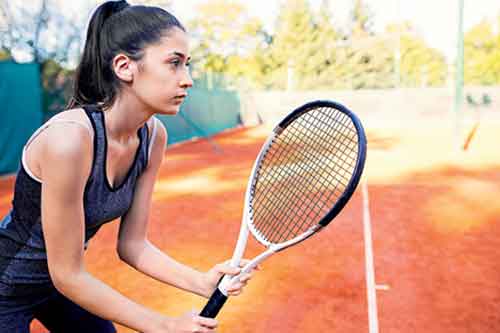The physical development of young women has gained a lot of attention over the last few years. Previously, most of the research with regards to physical and athletic development focused on young boys. Although boys and girls tend to show similar growth in physical development during the first decade of life, there is a significant difference in physical and athletic development over the second decade. This is partly due to maturation and hormonal changes during puberty.
Girls tend to mature comparatively earlier (approximately around 12-12.5 years) whereas boys tend to mature late (approximately around 14 years). Studies have reported that biological maturation is a better measure of growth compared to chronological age. Multiple methods have been studied to assess maturation. One common measure is identifying peak height velocity or PHV (the point of rapid increases in stature). This is calculated using anthropometrical variables such as height, seated height, leg length and chronological age.

Stereotyping hinders the physiological aspects of growth
During the time of PHV, the bones tend to grow faster than muscles and tendon in boys and girls. Due to the influence of testosterone (sex hormone), boys tend to also see improvement in hypertrophy of muscle tissues, strength and power. However, girls do not see the same improvement in strength, power and hypertrophy due to the influence of estrogen (sex hormone). Besides, girls tend to increase fat mass comparatively more than boys that can negatively influence power-to-weight ratio, therefore, making participation in sports and exercise more challenging compared to their male counterparts.
Furthermore, the psychosocial aspects often associated with physical self-concept also tend to change during this time. With social construction of how a female body should look and behave along with stereotypical gender biases further adding to the problem, girls are often expected to be thin, weak and pick “lady-like” physical activities whereas boys are expected to be strong, big and pick masculine activities.
This stereotype hinders the physiological aspects of growth, as both boys and girls are mostly trying to align to unrealistic and not sustainable norms set by the society in general.

Pictures: iStock
As a result, it pushes many young girls away from participating in physical activities, impairs relationship with peers and creates more self-doubt in their understanding of their physical self. Therefore, the time leading up to PHV is crucial for girls to be exposed to various movement skills and create a broad movement vocabulary. This can help them be more resilient with a greater focus on learning skills as opposed to trying to align to unrealistic social norms of focusing on appearance.
There are several ways to increasing young girls’ movement vocabulary. Although more specific ways can be developed based on collecting relevant individual information but some common factors should be acknowledged in general; they are provided below.
Environment
Creating an environment that can mitigate the gender stereotype and allow girls to participate freely without having to worry about unrealistic outcomes associated with physical appearance is important. Young girls should be exposed to various movements, be it through sport or physical activity regularly.
Enjoyment
Although some amount of structured work is required to master any skill, however, young girls — particularly pre-PHV (before puberty) — should participate in less structured physical activities. This can increase enjoyment and help them be more creative. It is also important to make sure older girls (mid- and post-PHV) also have fun when more structured physical activity is introduced. For example, semi-structured and unstructured form of play can be incorporated within a structured strength training session before or after the session.
Growth and maturation
It is important to acknowledge biological growth and maturation when it comes to improving movement vocabulary in young girls. For example, two girls of similar age but one of them has matured earlier and magnitude of growth is comparatively greater than the other might affect their ability to learn movement skills. This can affect both physical and psychosocial factors associated with learning movement skills. Therefore, acknowledging biological age and maturation along with chronological age is vital when it comes to increasing movement vocabulary in young girls.
Strength and power
Improving strength and power can have a positive influence on young females, particularly during mid-PHV. This is the time when the bones tend to grow faster than muscles and tendons. Therefore, improving overall strength and power can positively influence tendon stiffness, neural drive, lean muscle mass, provide them with an advantage in sports and even help reduce injury incidents. However, care should be taken in incorporating strength and power training with gradual progression based on individual movement competency.
Next time, I will provide more details in improving movement vocabulary in young females.
Kaushik Talukdar is founder and CEO of Athlete Institute (www.athlete.institute) and a PhD scholar (‘Sports and Exercise Science’; Auckland University of Technology). You can reach him at kaushik@athlete.institute or look him up on Twitter @coachkaushik











